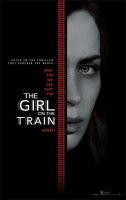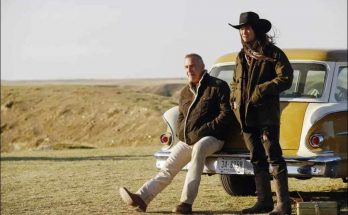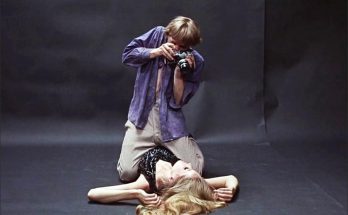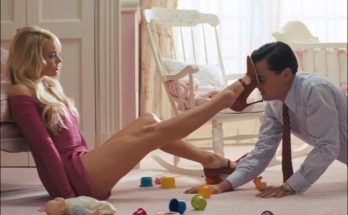Before signing on to direct adaptation of The Girl on the Train, Tate Taylor (The Help, Get on Up) sat down with Paula Hawkins, the British author who wrote the original New York Times best-selling thriller. Fittingly, given the protagonist’s vice of choice, the two drank four gin and tonics over the course of their 45-minute meeting.
“It was the exact same experience I had with Kathryn Stockett for The Help,” explained Taylor during a phone call on Wednesday. “I met with Paula and she asked, ‘What are your intentions?’” Rather than a straight adaptation, Taylor knew he would have to restructure certain elements of the mystery so that the story would be as effective on-screen as it was on the page.
He also knew which components he wanted to emphasize. “I said, ‘I’m going to lean into the sexuality. I’m going to lean into the darkness. I’m going to lean into the addiction and just keep it very truthful.” As he later explained his vision to star Emily Blunt, “It’s a thriller, but I really view it as a complex character piece about three very troubled women. It’s not a movie about relishing what you have, but looking for what’s wrong.”
The resulting drama stars Blunt, Haley Bennett, and Rebecca Ferguson as the aforementioned women whose lives unexpectedly tangle in tragedy, danger, and intrigue. To celebrate the film’s Friday premiere, Taylor took us through his process of adapting the addictive thriller and shaking up the story’s format.
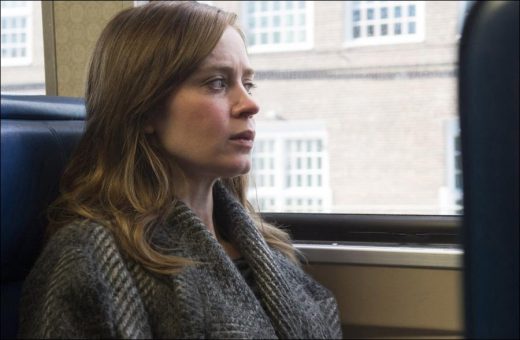
Emily Blunt plays this tragic role of a blackout alcoholic so convincingly—and there is not an ounce of awareness, as an audience member, that she is playing drunk as opposed to actually being drunk. How did she prepare for the role?
“We talked a lot about addictive behavior,” Taylor explained. “And the need to keep [their vice] secret. So there is a reason why the audience does not always see Rachel drinking—it adds to the mystery of an addict’s behavior. I wanted everybody to wonder if she had been drinking or not been drinking or if she was lying.
“Emily did a lot of work… she watched every single Intervention there was. [As it turns out,] a lot of addict behavior, even at their most intoxicated, it’s hard to tell how intoxicated they are. We just wanted it to be truthful, and we found the balance together… She and I developed a system of levels [to determine] how drunk she would be in each scene. Level four was her most drunk. We developed what her eyes, speech, and cheeks would be like—we had these prosthetic pieces called plumpers. It was like a retainer that forced her cheeks to be puffy, just because alcohol gives you a puffy face… Then we figured out what level three looked like, and what level two looked like.”
Why do Megan (Bennett) and Scott (Luke Evans) get so many love scenes in the film, while Rachel’s were removed for the film adaptation?
As Taylor promised Hawkins, the final film does indeed showcase Scott (Evans) and Megan’s (Bennett) sex life. “The book is all about addiction and medication, and we know what Rachel’s was—alcohol. Anna’s (Ferguson) addiction, in my opinion, was angora sweaters, the perfect house, the perfect baby—this perfect domestic life. And Megan’s was sex and the constant need to be liked and loved, so I needed to show what that looked like. I needed to see it and not just hear about it. I needed to see her trying to seduce her therapist by touching herself over her panties.
“If you remember, in the novel, Rachel had a great deal of sexuality [and] she slept with guys,” Taylor said. In the film, although Rachel’s attraction to Scott is evident—she stares longingly at his torso as he lifts his shirt in one scene—Taylor ultimately opted to keep his protagonist chaste. “The reason I had Luke expose his torso and Emily look at it, if you go back to the book, the first time Rachel cons her way into Megan and Scott’s house, it’s very sexual. She basically objectifies him, talks about his smell, and it’s a very voyeuristic sexual encounter, and it was very much to get close to him.”
Why Detective Riley was made a female for the film.
“Allison Janney [who plays Riley] is in everything I do,” explained Taylor. “We’ve been dear friends since 1996… In the book, Detective Riley was a man, and with a female sidekick. And I said, ‘You know what? Let’s just flip it around.’ Let’s make Riley a female detective with a male sidekick who doesn’t speak much. I just knew it would be so fun to see Allison playing a hard bitch with an axe to grind.”
Why does the film take place in New York?
The decision to change the story’s setting was made before Taylor signed on to direct—but he defends the decision. “What’s interesting is it just really doesn’t even matter,” he explained. “I went back to the book and realized that Rachel talked about London, but it wasn’t a character, really. Everything took place on the train, and in the brains of these women. So for those who ask, why did you move it to New York? My answer is really this could be anywhere.”
Where did the idea for Lisa Kudrow’s surprise character come from?
One new addition to the story, in the film, is Martha (Kudrow), the wife of Tom’s former boss, who plays an integral role in Rachel’s memory of her marriage to Tom (Justin Theroux). Taylor explained that, in adapting the book, he was trying to figure out a way to convey a single line that Hawkins wrote, toward the end of her novel: “And then Rachel remembers.” Those four words indicated that our heroine had been remembering a series of events incorrectly.
“I had to come up with that whole device,” explained Taylor. “It was that quick [that she realizes], and you just don’t get to realize something that quickly in a movie. I wanted to make it cinematically cool, or a pivotal plot point that
Rachel was remembering. So I realized I had to figure out someone to tell her [that her memory was wrong]… I went back to the book and Paula’s writing, and she had Rachel very quickly mention how Tom used to tell her how she embarrassed him at his work parties… so from that, I created Lisa’s character, who was the boss’s wife—to gaslight not only Rachel, but the audience… You think Lisa was this Upper East Side bitch. In reality, she wasn’t. I just plucked a line out of Paula’s novel and turned it to a character.”
How did Taylor map out Tom’s gnarly death-by-corkscrew, which closes out the film?
In both the book and the film, Rachel kills Tom by plunging a corkscrew into his neck—a visual that Taylor brings to life in his feature. “When I read the novel the first time, when that happened, I was a little taken aback,” Taylor said of the violent ending. To make the murder seem warranted, Taylor was careful to place the scene close behind Megan’s death. Before shooting the sequence, Taylor told Blunt and Theroux, “This needs to be quick and fast, and then it needs to become intimate. It needs to be this ex-couple staring each other in the eyes as he dies in her arms, even though she doesn’t want him to die in her arms. He grabs her. That’s why I made the choice for it to be rapid and fast, and then her let him go as he bleeds out.”
Taylor had a team build prosthetics for the scene. And even though the sequence—one of the most disturbing ones we’ve seen recently—is difficult to watch, know that Taylor actually spared his audiences by making one subtle adjustment. Although a medical professional told him how much prop blood would have to be used for an accurate depiction of a corkscrew being jammed into someone’s carotid artery, Taylor generously decreased the amount of prop blood to only be about 20 percent of what would be seen in real life.
The Girl on the Train (2016)
Directed by: Tate Taylor
Starring: Emily Blunt, Luke Evans, Rebecca Ferguson, Haley Bennett, Laura Prepon, Justin Theroux, Allison Janney, Lisa Kudrow, Hannah Kurczeski, Lana Young, Jalina Mercado
Screenplay by: Erin Cressida Wilson
Production Design by: Kevin Thompson
Cinematography by: Charlotte Bruus Christensen
Film Editing by: Michael McCusker
Costume Design by: Michelle Matland, Ann Roth
Set Decoration by: Susan Bode, Judy Gurr
Art Direction by: Deborah Jensen
Studio: Universal Pictures
Release Date: October 7, 2016
Visits: 33


